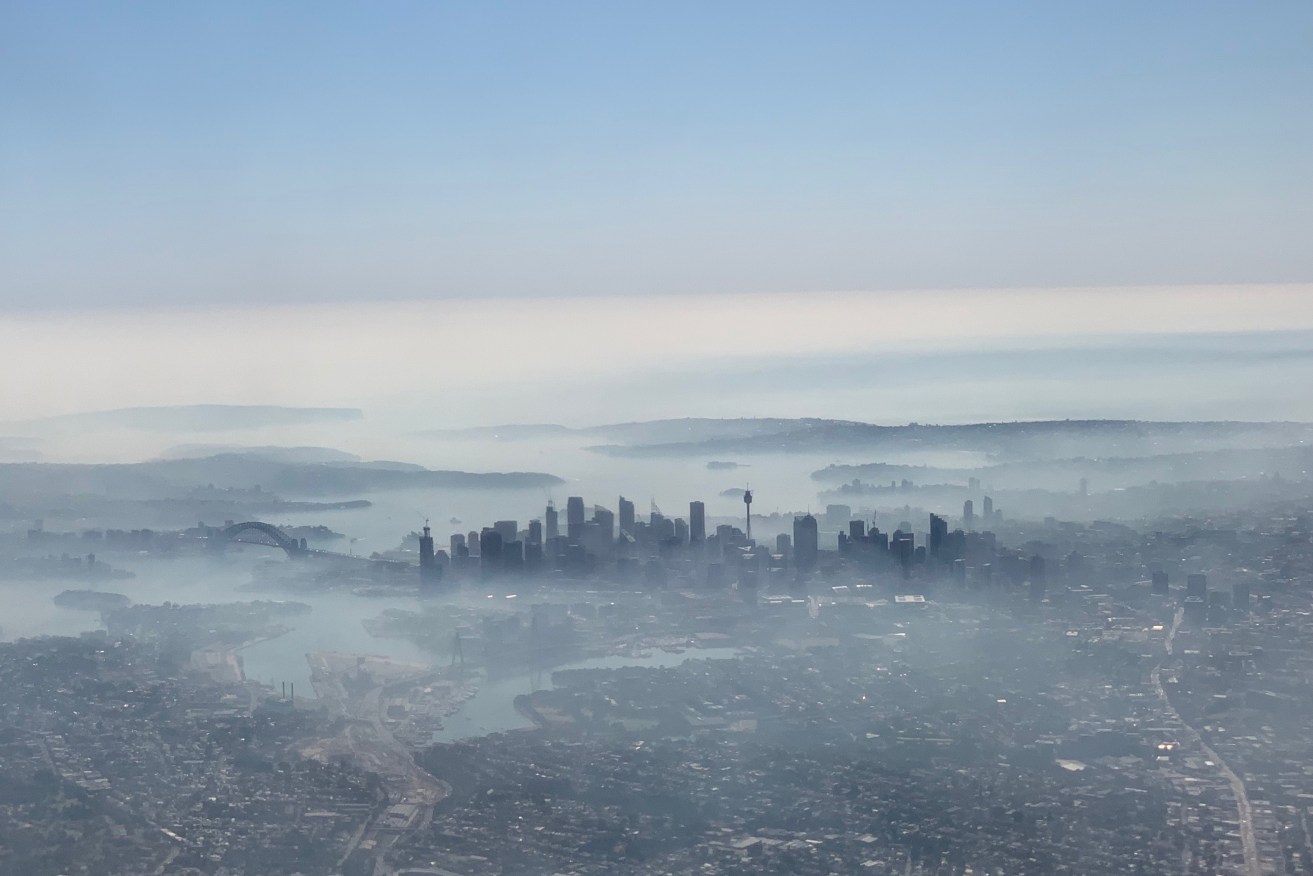Bushfire recovery to take years, with 80 per cent of Australians smoke-affected
It will take at least five years for people to recover from the trauma of Australia’s devastating bushfires, a disaster responsible for an estimated $2 billion in smoke-related health costs, experts say.

Smoke haze blanketing Sydney: record dry spring weather set the scene for the bushfire crisis. Photo: AAP/Neil Bennett
Research from Victoria’s 2009 Black Saturday bushfires shows someone who has experienced a major disaster is at greater risk of mental health problems in the years afterwards, University of Melbourne public health professor Lisa Gibbs says.
“When we’re thinking about the recent season of bushfires, it’s still very early days in the recovery,” Gibbs told the bushfires royal commission on Tuesday.
“One of the recommendations from our research is that we always think in at least a five-year recovery framework from a major disaster.
“That’s the reality of the process it takes.”
The Black Summer bushfires killed 33 people, destroyed about 3100 homes and burned about 12 million hectares across Australia.
Smoke from the blazes affected far more people than the actual fires, Associate Professor Fay Johnston from the University of Tasmania’s Menzies Institute for Medical Research said.
“Our estimate was 80 per cent of the population of Australia were adversely affected by smoke from these fires,” she told the Royal Commission into National Natural Disaster Arrangements.
The researchers found there were 445 “excess deaths” attributable to smoke from the bushfires, 3340 admissions to hospital for heart and lung-related problems, and 1373 additional presentations to emergency departments for asthma.
Researchers estimated the smoke-related health costs associated with premature deaths and hospital admissions were $2 billion.
“That was a major departure from anything we had seen in the previous 20 years,” Johnston said.
About 200 of the 1700 submissions received by the royal commission have focused on health and mental wellbeing.
Senior counsel assisting the commission Dominique Hogan-Doran SC said those submissions emphasised the compounding effect of the drought, bushfires and now the coronavirus pandemic.
The submissions highlighted the major stresses of incorrect, outdated and unclear information being provided during the bushfire emergency and the loss of internet and communications.
Hogan-Doran said additional trauma had also been reported of people struggling to access medical services.
Later on Tuesday, the royal commission will hear pre-recorded accounts from two locals from the Victorian town of Mallacoota, which was cut off by bushfire.
More than 1500 people were evacuated from the Mallacoota beach by the Australian Defence Force, making it Australia’s largest peacetime humanitarian rescue mission since Cyclone Tracy in 1974.
– AAP
Want to comment?
Send us an email, making it clear which story you’re commenting on and including your full name (required for publication) and phone number (only for verification purposes). Please put “Reader views” in the subject.
We’ll publish the best comments in a regular “Reader Views” post. Your comments can be brief, or we can accept up to 350 words, or thereabouts.




